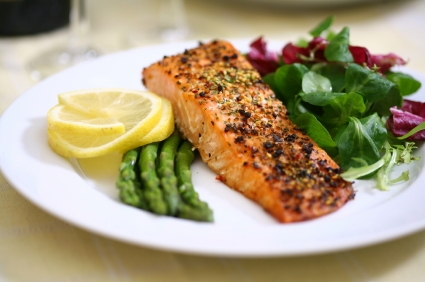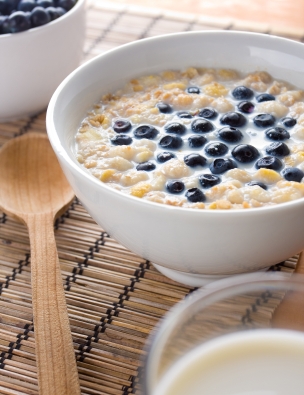Food For Thought
|
Reading time: 7 minutes
|

Eating Out – Are The Low Prices Worth It?
Rising food prices have
become particularly evident in the grocery store. In fact, in April 2011, world food prices rose to a record high price level. But why have grocery store prices risen more than restaurant prices? Firstly, restaurants are able to offset some of these pricing rises by buying food in bulk. Secondly, restaurants cut costs by dismissing staff, whereas grocery stores pass the price increases on to the consumer.
Although a burger and fries costs less than grocery store food, it is important to look deeper to see if you’re really saving in the long run. A diet consisting of hamburgers may be frugal, but it is not nutritious, and this may negatively affect your health in the long run. Secondly, the production of cheap food has many negative, expensive consequences on the earth, including stratospheric health care costs and the destruction of the earth as a whole.
Even if you dine at a five star restaurant, there are a multitude of other factors that make cooking at home better for your health. Most meat comes from massive CAFOs (Concentrated Animal Feeding Operation), where the beef, chicken or pigs are fed genetically modified corn and soybeans and excessive grain. None of the aforementioned is a natural diet item for these animals. Additionally, most restaurant fish is farm-raised, and many seafood items are often made from inexpensive items and then passed off for more expensive items, such as Maryland-style crab cakes, which may be made from crab from Vietnam instead of crab from Maryland.
In addition to the restaurant versus grocery store dilemma, you need to look at what you choose to spend your money on at the grocery store. Processed snacks and pre-packaged meals are short sighted and a poor investment for your health.
Should I buy organic?
There is controversy over the benefits of organic and what foods you should buy organic, particularly if you are on a budget. According to a 2010 study by the US Environmental Working Group, the following products typically have a large amount of pesticides used on them: Grapes, Cherries, Nectarines, Strawberries, Potatoes, Spinach, Blueberries, Peaches, Kale/Collard greens, Sweet bell pepper, Apples, Celery.
Here are some strategies to eat well at home on a tight budget:
- Identify a person to prepare the meals: Someone will need to spend some time preparing the meals, so it is important to figure out who that will be, whether it is yourself, your spouse, or some other family member.
- Become resourceful: Go back to the basics of cooking – use bones from a roast of for a pot of soup and eat leftovers.
- Plan your meals: Planning you meals will save you time and energy. You can generally plan ahead for a week of meals and get all the ingredients for those meals in one big shop. You should also do as much prep work ahead of time as possible. Lastly, try to make your lunch for work instead of going to eat at fast food restaurants at work.
- Avoid food waste: Americans waste an estimated 1400 calories per person every day. Buy only the food that you will eat.
- Buy organic animal foods: Animal foods tend to have the highest amounts of concentrate pesticides; therefore, if you can’t afford to buy all your food organic, opt for organic animal food first.
- Keep costs down on grass-fed beef: Grass-feed beef is far healthier than grain-fed beef. You may save money by buying beef in bulk and then splitting it up and freezing the excess.
- Buy in bulk when non-perishable items go on sale: Join a buyer’s club or co-op, and you will be able to take advantage of the savings there by buying non-perishable items on sale.
Conclusion
It is clear that when one takes into account the real value of food (aka nutritional and health), it is much more beneficial to buy your food at grocery stores and eat at home than it is to eat out at restaurants, even if it is seemingly cheaper to live off of $1.99 burgers and fries. With the tips above, hopefully you can become a savvy and resourceful grocery shopper, preparing the best value meals as possible.
What to Eat to Look Beautiful

Everyone (at some level) wants to be more beautiful. It’s human evolutionary nature to strive for aesthetic appeal and make our peacock feathers stand as bright as possible. But beauty is found on the inside, and when it comes to food intake, it is literally the case: looking good is more about what you put into your body than what you powder all over it. So without further adieu, we present the list of foods that will increase your beauty.
Whiter Teeth – Celery contains fibrous cellulose which scrubs away teeth stains like a high potency whitening strip, so if you find yourself with a last-minute invitation to that gallery premier, snack on some celery. It will do wonders, as celery requires more energy to eat than it has within it, it’s a great weight loss snack as well.
Strong Nails – Do you want nails strong enough to play hours of basketball, or maybe to go rock climbing? If you’re amongst those women who find their nails breaking away like a dry piece of peanut brittle then you may be interested in some walnuts. Biotin, which can be found in walnuts, is the b-vitamin responsible for strengthening nails. Walnuts also have high sources of Omega-3’s which help to reduce wrinkles.
Healthy Hair – Men and women all want that luxurious shine that we see on the Pantene commercials. Flawless hair cannot be achieved without lots and lots of protein. One great way to get those essential oils so your hair remains impermeable to any sort of break is to load up on beans, as they are super-rich in the type of protein your follicles need to grow.
Healthy Skin – the antioxidants responsible for glowing, youthful skin are called carotenoids. These highly sought-after dermatological free radicals can be found in squash and other colorful fruits and vegetables. Sweet potato in particular is jammed packed with this important antioxidant. Omega-3’s oils, colloquially known as the “anti-wrinkle” essential oils, are found in abundant quantities in salmon. If you’re struggling with some blotchy skin, or persistent acne, try some smoked salmon with squash and sweet potato tonight and see if you don’t look a bit more radiant by nightfall.
Anti-Aging – So when it comes to vitamin C, the trusty orange is the best for delivering large quantities into the body, right? Wrong. One red bell pepper has 2-3 times the vitamin C content of an orange. Vitamin C is important because it protects us from the sun, which acts towards anti-aging. The avocado is another fruit sprung from the fountain of youth; it helps to keep the skin moist, and it likewise packed with antioxidants that work to combat aging.
Gorgeous Eyes – Raisins may not be fully-moisturized grapes, but they’re fully nutritious. Loaded with potassium, magnesium, phosphorus, and iron, raisins help to balance the body and mood and cause your body to look more vibrant and strong—they give your eyes that sparkle that you see in people who seem to exhibit superior health. Raisins also help in removing toxins from the body.
The above should illustrate that the key to looking good is eating good. There really is no substitute for the type of beauty found in many of nature’s foods, and by eating them you transfer that essential vitality to yourself, making for a strong, radiant figure in that proverbial bedroom mirror. Be the type of quality that you want to see in yourself by eating quality ingredients. By springtime you’ll be rivaling the sun with your luminescence.
Information provided on this website is for general purposes only. It is not intended to take the place of advice from your practitioner
